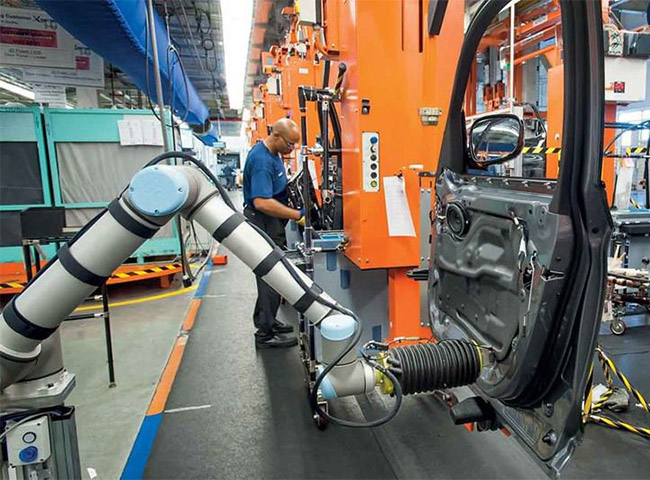
Eyes on the Product: Robotic Inspection Systems Result in Improved Product Quality
Robotic systems have been an integral part of manufacturing operations for decades. In order to improve the robotic system operations, vision systems have been paired with the robotic equipment, particularly to assist with inspection processes. However, these vision systems have been limited. Vision systems used to require separate hardware and software to capture and analyze the images, or images had to be manually reviewed by an operator. Hardware and software specialists were required to program the software and maintain the hardware. These factors resulted in a high operational cost for integrating vision systems into manufacturing processes. Today, advances in vision systems and integration with robotic processes have resulted in a simpler, more streamlined inspection process and higher product quality.
Improving Product Quality Using Vision Systems
Automated inspection systems that utilize vision systems provide a more consistent and accurate inspection process. Improvements in the inspection process result in higher quality products and reduced loss.
Many robotic systems are now available with off-the-shelf vision tracking systems. The cameras and lighting are integrated with the robotic controller system to enable comprehensive operations based on the camera images. These systems are now far more cost effective than previous solutions, allowing manufacturing plants of all sizes to implement vision inspection.
Challenges with Robotic Inspection Systems
Robotic inspection systems that use vision technology have to overcome several challenges in order to provide accurate and dependable inspection results:
Lighting – Lighting in a manufacturing setting is not always optimal, so vision inspection systems often use integrated lighting to improve the ability of the system to detect critical parameters. For some applications, direct lighting does the job, whereas for applications with shiny surfaces, indirect lighting is needed to prevent reflections and shadows that could affect the quality of the visual inspection.
Overcoming Parallax and Distortion – For inspection of large areas, the nature of the vision equipment results in distortion of the image, particularly at the outer edges of the image. To naturally correct for these distortions, the camera would have to be mounted far away from the inspection point, which reduces the resolution of the image. In addition, it’s generally not feasible to mount an inspection camera far outside the manufacturing line. Advanced vision systems counteract this by employing a precision grid pattern behind the part that is inspected. The imaging software uses this grid to correct for image distortion, resulting in an image that is dimensionally true to the part.
Coordinating Image Data with the Robotic Controller – For advanced inspection systems that include robotic handling equipment, acquiring an inspection image is only half of the operation. Advanced systems require robotic equipment to perform operations on the inspected part based on the results of the inspection. This could include picking up and moving the part to a specific location based on the results of the inspection, or performing an operation in real time based on the guidance of the vision system. Therefore, the results of the inspection must be correlated with the robotic control systems.
The products available today for automated inspection and integration with robotic systems are far more user-friendly than those previously available. Manufacturing engineers are capable of operating and updating these systems without requiring a potentially expensive vision systems consultant. Today’s systems are also much faster than previous systems, utilizing Ethernet connectivity to communicate between hardware and databases.
